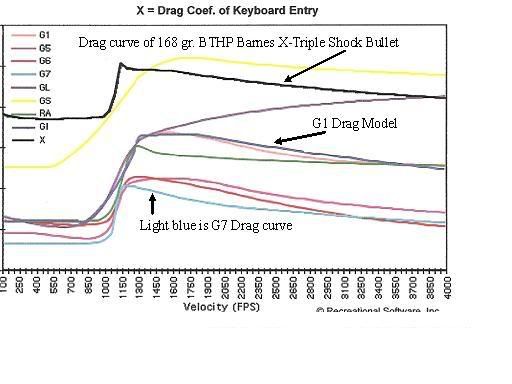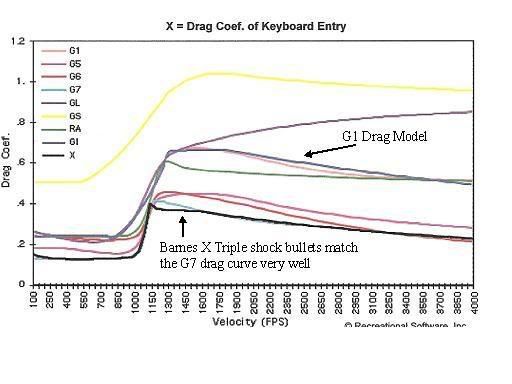Re: G7 BC for .308 175 SMK?
<div class="ubbcode-block"><div class="ubbcode-header">Originally Posted By: TiroFijo</div><div class="ubbcode-body">Mitch, trust me I know all the theory, but are you sure the G7 curve fits the 175 SMK better than the G1? By what margin? How do you know this?</div></div>
Since it takes Sierra 3 different BC numbers to fit one drag-model, that drag-model is not a very accurate representation of the flight characteristics of that bullet. If the bullet exactly matched the drag model, you would need only 1 BC number. Indeed, Bryan has found that the PALMA style bullets fit the G7 drag-model withiin a very small percent error band. See:
http://www.appliedballisticsllc.com/index_files/Lapua_Scenar.pdf
<div class="ubbcode-block"><div class="ubbcode-header">Quote:</div><div class="ubbcode-body"> The different shape bullets SHOULD fit the appropriate drag curve better, but this is not always the case... subtle differences in shapes, and caliber variations, means that each bullet has an individual drag curve that many times is not exactly the same as the sample bullet.
Sierra shoots the bullets at various velocities to find the G1 BCs in these brackets, we all agree with Bryan this is not perfect but works, and it is real world data, not just a G1 BC measured at top speed in the first 200 yds like many makers do.
In this particular case, the Sierra 175 SMK G1 BCs are 0,505 (above 2800 fps), 0,496 n(between 2800 and 1800 fps), and 0,485 (below 1800 fps). Sierra uses as much as five G1 BCs, and the 175 SMK is one of their most tested bullets, with lots of real world data from military tests. If they choose to use only three BCs to "fit" the bullet to the G1 curve that's a hint... another is that loaded in a 308 Win all the velocities are below 2800 fps, so we are only talking about a 2.2% difference between 0.496 and 0.485.
I would like to know about tests, with real world data, to see if the G7 really fits better, and how much...
BTW, I'm not against progress and I fully agree with Bryan and all of you that the best fit curve should be used in every case
</div></div>
Read Bryan's test results of PALMA bullets.
In a sense, you are correct. Instead of publishing the BC number, they should be publishing the drag-model for that bullet. Just like the transistor models for SPICE used in circuit simulations. One cannot characterize transistors with a couple of parameters, one needs a whole <several hundred equation> model to accurately simulate a single transistor. Bullets are at least as interesting.
However, this would mean ballistics simulators would have to be tweeked to allow downloadable ballistics models for each bullet. Such is the cost of accuracy. At this point I revert to the standard:: "A ballistics program is only good enough to get you on paper. If you want accuracy, keep a dope book." mantra.
So I will end with this thought: A coefficient (as in Ballistics coefficient) should be a single number; NOT a number that is velocity dependent. Seeing that a coefficient is dependent on some other parameter tells you that that given number is NOT a coefficient. Coefficients are constant for a given <thing, operating regimine>.
Getting the drag-model correct makes the BC appear to be more constant--or makes the ballistics calculation closer--but nothing is as accurate as actual dope. Actual dope IS the trajectory--which then gets distilled down to a BC and then regurgitated into a trajectory. The dope is corect, the output from the program is merely a starting point for missing data in the dope book.
BTW I am not knocking Sierra, this is a plea for reloaders/shooters to use an appropriate model when striving for extreme accuracy; and a plea to have manufactures provide their best estimates that drive these models. The ideal case is not a BC that actually is a constant, but a drag-model (wqhich can be plugged into a Ballistics program) that makes whether the BC is a constant or not vanish into insignificance.







